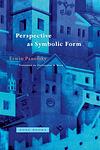Erwin Panofsky
Erwin Panofsky was a renowned art historian, born on March 30, 1892, in Hannover, Germany. He became particularly famous for his work in the field of iconography, which is the study of the content and meaning of visual arts. He was a key figure in developing the methodology of art history during the 20th century, influencing the way art historians analyze and interpret works of art. Panofsky's works, such as 'Studies in Iconology' and 'Perspective as Symbolic Form', are considered seminal texts in the field. He spent a significant part of his career in the United States, where he taught at institutions like New York University and Princeton University. Panofsky passed away on March 14, 1968.
Books
This list of books are ONLY the books that have been ranked on the lists that are aggregated on this site. This is not a comprehensive list of all books by this author.
-
1. Studies in Iconology
"Studies in Iconology" is a seminal work in the field of art history that examines the use of allegory, symbol, and motif in visual art. The author uses a method known as iconology, which is the study of the content and meaning of works of art, as opposed to their form. By doing so, he provides a deeper understanding and interpretation of various artworks, particularly those from the Renaissance period. The book also delves into the cultural, historical, and psychological contexts in which these works were created, offering an in-depth exploration of the symbolism and significance of imagery in art.
-
2. Perspective As Symbolic Form
"Perspective as Symbolic Form" explores the concept of perspective in art, particularly how it reflects the philosophical and cultural attitudes of the times during which it was used. The book delves into the development of perspective from the Renaissance onwards, arguing that it is not merely a technical drawing tool but a form of symbolic form that conveys specific ideological messages. The author examines how perspective shapes the way viewers perceive art and reality, suggesting that it represents a broader cultural shift towards a more systematic and scientific approach to viewing the world. Through a detailed analysis of historical and artistic contexts, the book reveals how perspective has been both a technical achievement and a profound shaping force in Western visual culture.

